As our vehicles roll to a stop along the muddy track, a postcard-perfect scene stretches before us. Rolling prairie dotted with beautiful wildflowers, with towering snow-capped peaks in the background. But the kids around me don’t notice any of it.
“Antler!” one of them cries, and the group is off, running across the rolling hills. A youngster is soon hoisting an impressive elk antler over his head. His friends look on with admiration, but soon another antler is spotted, and another.
I’m at The Nature Conservancy’s Zumwalt Prairie Preserve in northeast Oregon for what has become an annual event: a search for antlers shed by bull elk each spring. They’re collected by community members and sold to benefit the local 4-H and FFA groups.
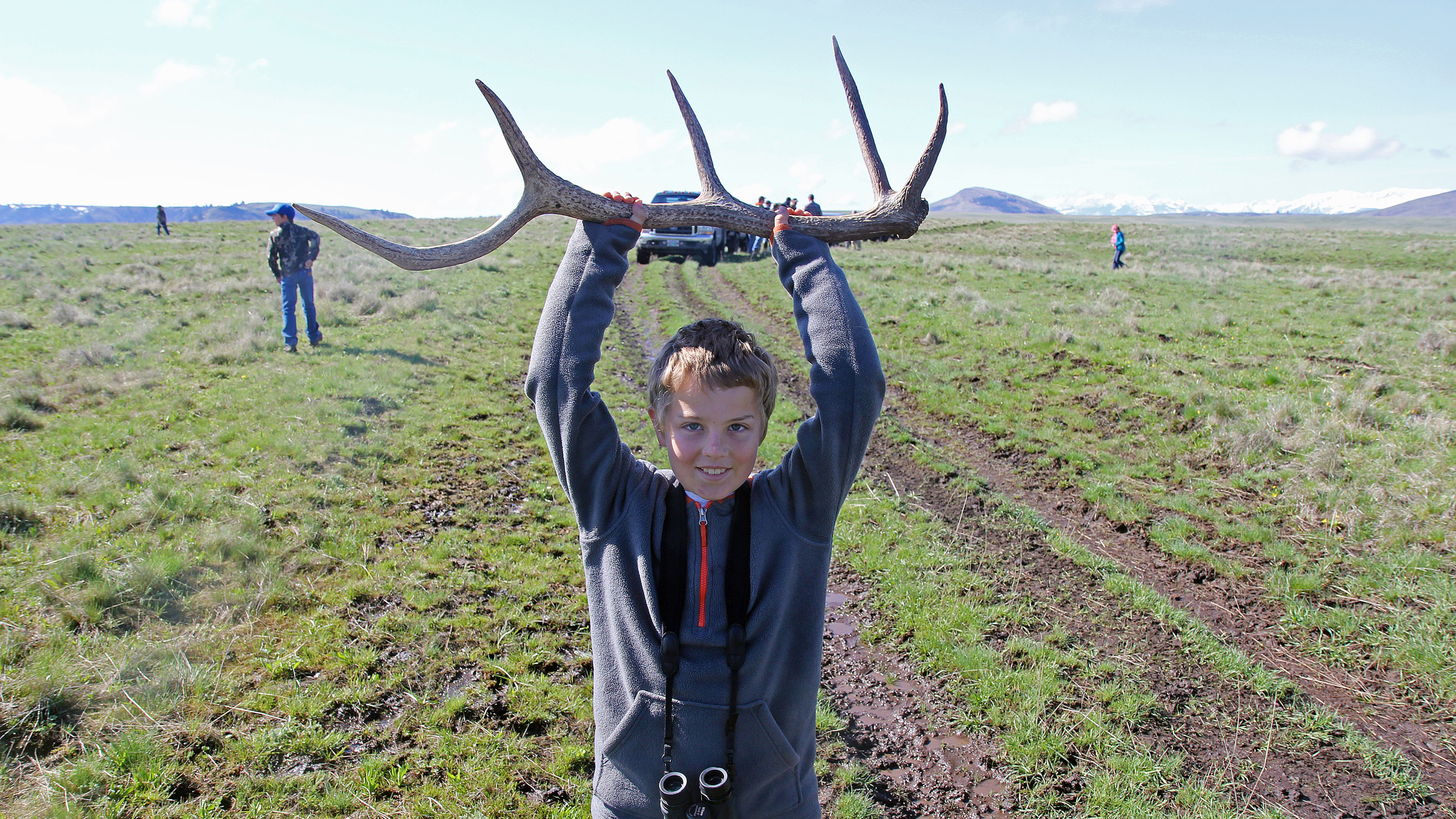
Standing on the grasslands, it feels somewhat like an Easter egg hunt on steroids, with the “eggs” being antlers. As it turns out: a lot of antlers.
Lots of Elk on the Prairie
All members of the deer family shed their antlers each year, and finding these “sheds” has increasingly become a popular springtime activity for hunters and naturalists. I enjoy hunting for mule deer sheds in the hills behind my Boise home, and have published a couple of blogs on the subject.
Justin Jones, the Conservancy’s steward for the Zumwalt program, read those blogs and invited me to participate in one of the elk shed hunting days held on the Conservancy’s preserve every year. I’ve been meaning to visit Zumwalt for years.
In my experience, shed hunting can feel at times like finding the proverbial needle in the haystack, but Jones promised that the elk antlers would be plentiful. How could I resist? And so my wife Jennifer and 16-month-old son Derek hopped in the car for a shed hunting road trip.
We pulled into the preserve’s “summer camp” – a set of buildings that houses students and researchers – on a recent Saturday morning, with a line of other vehicles following. All around me stretched stunning grassland, the habitat protected at Zumwalt.
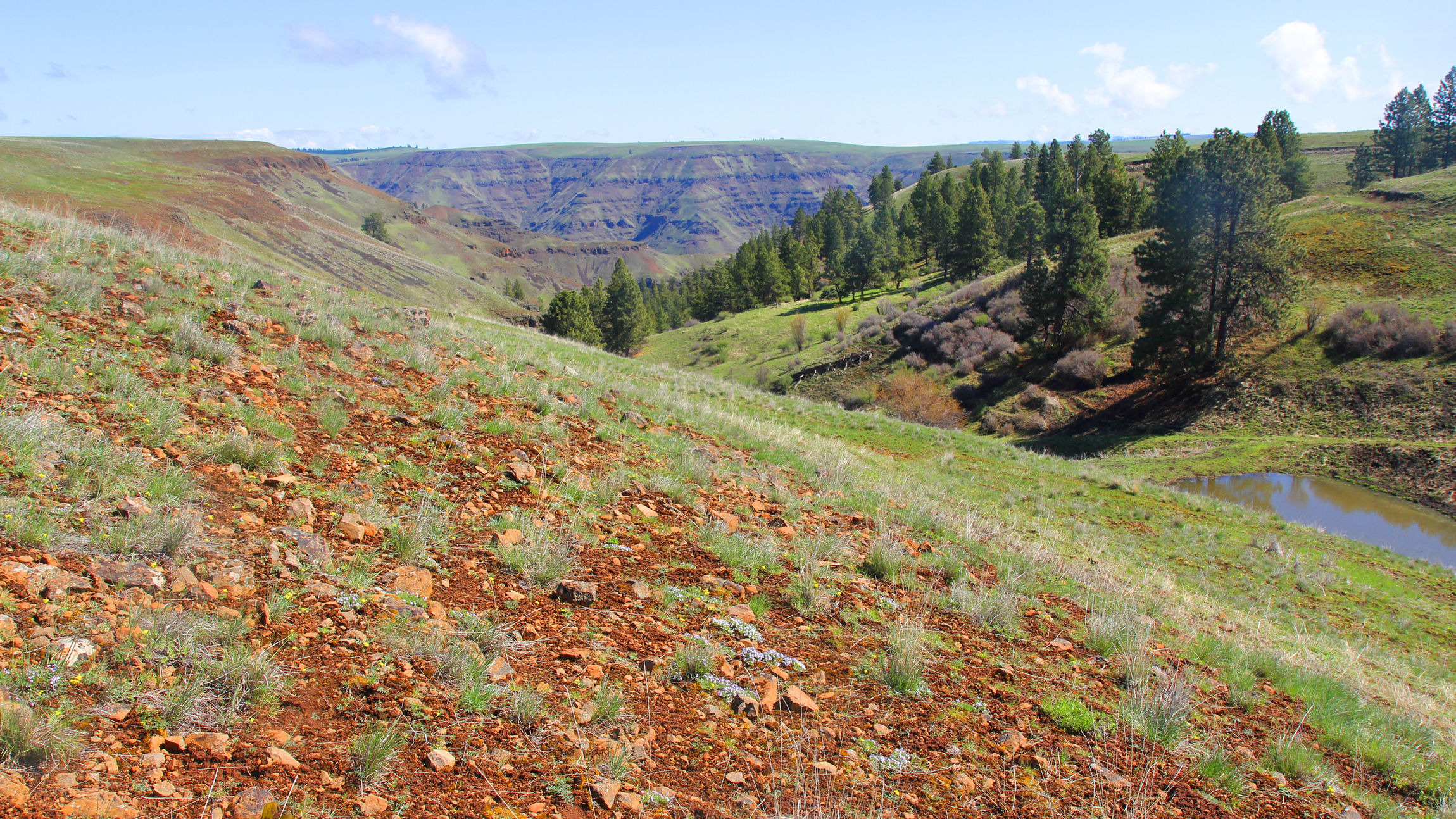
The preserve is 33,000 acres, making it Oregon’s largest privately owned nature sanctuary. A large population of ground squirrels draws an astonishing number of raptors. On just our short visit, we had stunning, close-up views of both Golden Eagles and Ferruginous Hawks. Grassland birds similarly abound. The preserve is home to a wide variety of other creatures from rare native bumblebees to mountain lions.
And there are elk. Lots of elk. In fact: too many elk.
The Oregon Department of Fish and Wildlife (ODFW) divides the state into management units, each with an elk population objective. In the Chesnimus Unit, where Zumwalt is located, has an objective of 3500 elk, but the herd size is 5500 animals.
This overpopulation stresses the habitat in particular aspen communities. Aspens are a quintessential Western tree, and provide excellent habitat for a wide variety of wildlife species. They’re also in decline, and many aspen stands are not regenerating.
“We are losing aspen on Zumwalt and we know elk are a major factor,” says the Conservancy’s Justin Jones.
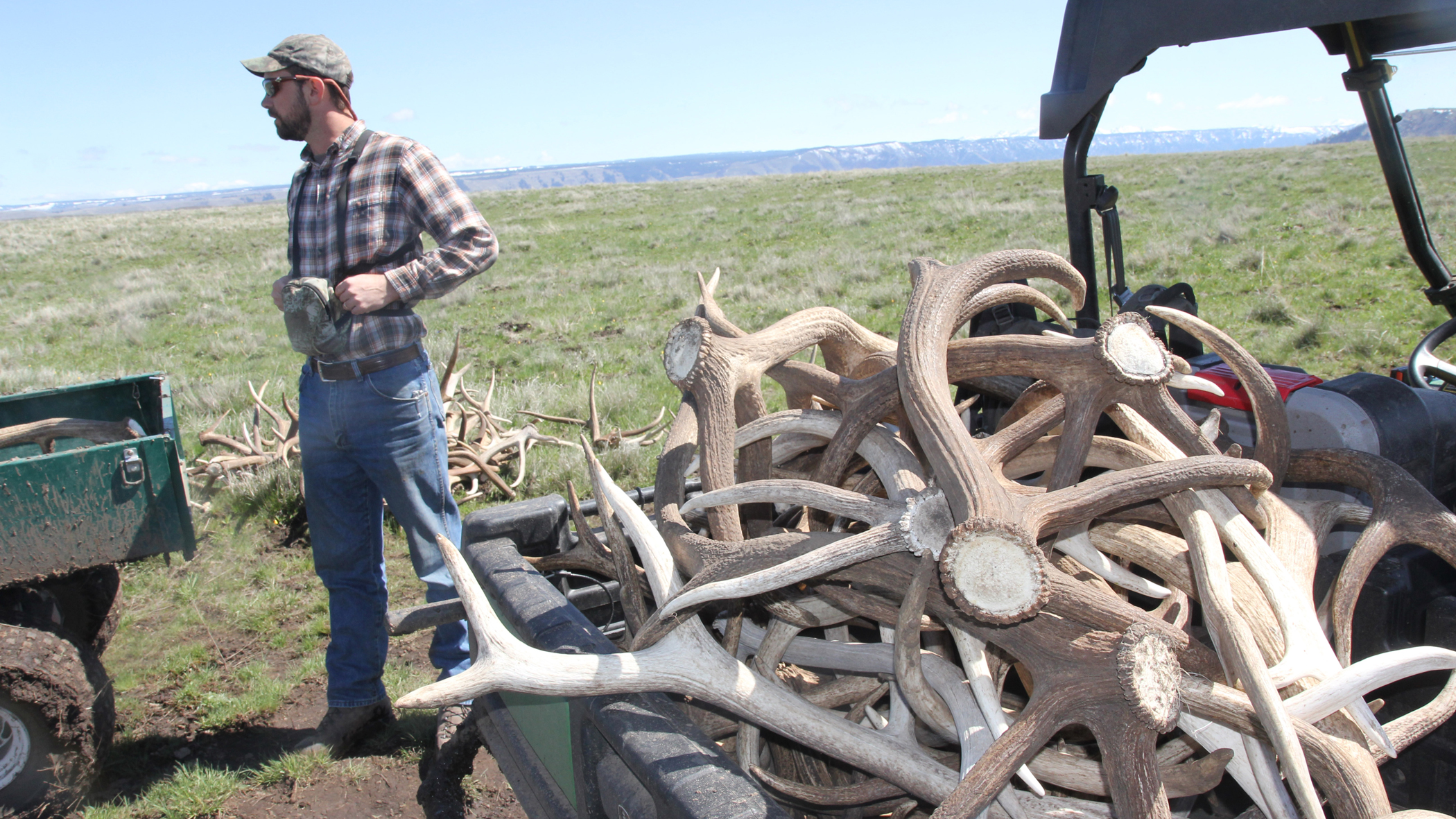
Conservancy staff know this from a monitoring program that places fences around aspen stands. Some of these are built to exclude all ungulates – elk, deer and cattle (the preserve includes a managed grazing program). Other fences are built to exclude cattle but allow elk and deer to enter.
“When all ungulates are fenced out, the aspen regenerate and are doing well,” says Jones. “If we just fence out cattle, it doesn’t make a difference. The aspens still get hammered. So cattle grazing is not the determining factor. The deer population is low. Elk are the primary culprit.”
As such, elk management has become a significant conservation activity on the preserve. It is also a way to involve the local community. Each fall, the preserve allows carefully managed antlerless elk hunting, run through ODFW. The hunting not only reduces the elk population but keeps elk moving away from sensitive habitats.
“It has also allowed us to become a bridge between sportsmen and the broader conservation community,” says Jones.
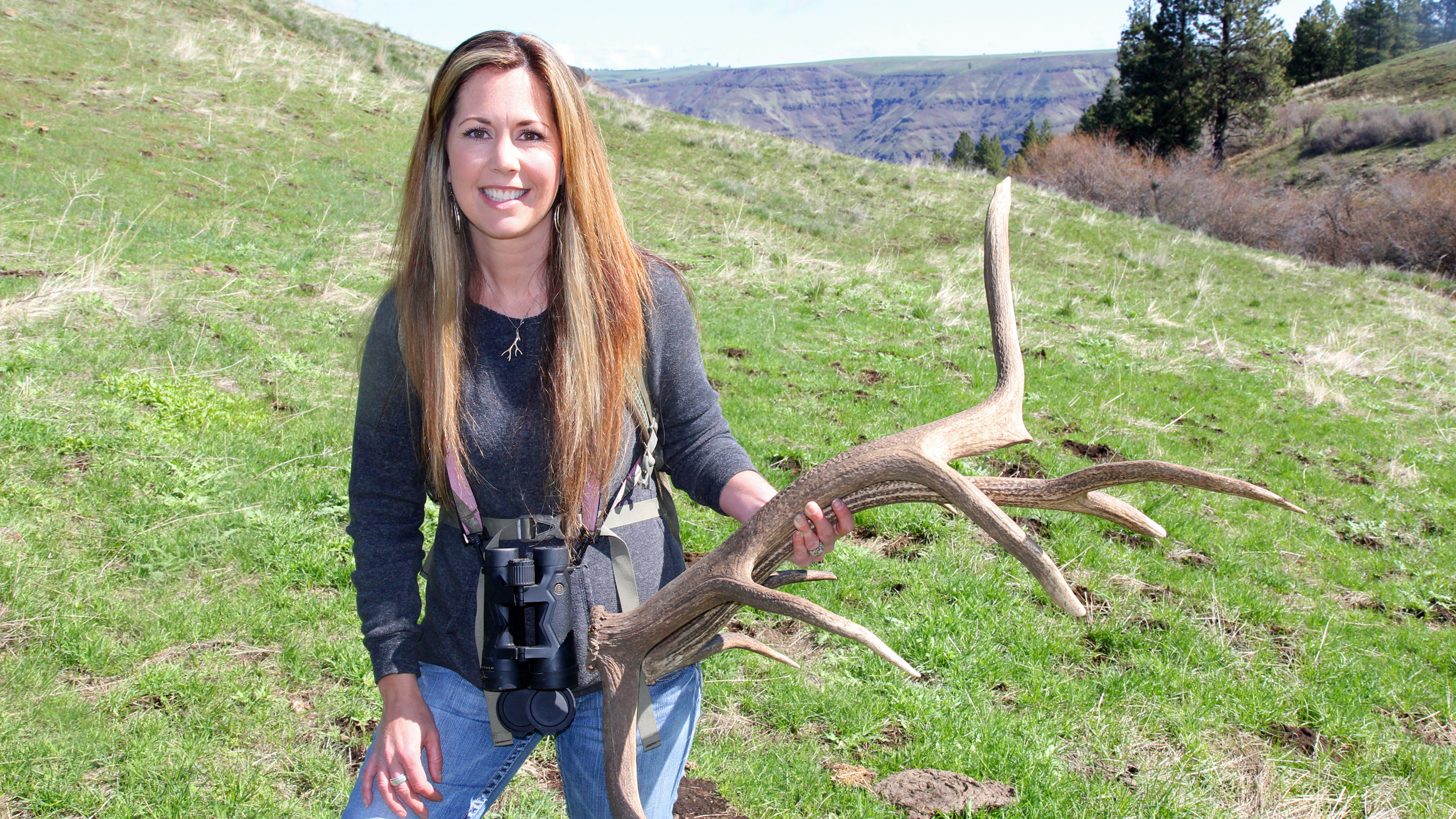
Indeed, most of the camo-clad shed hunters surrounding me are avid elk hunters. They’re here for a fun outdoor quest that also benefits the local community. For the past four years, shed antlers have been sold to a buyer, with the proceeds benefiting the 4-H and FFA to support their annual livestock sale.
Antlers bring about $14 a pound for brown antlers and $10 for the typically older, more brittle white antlers. They’re sold for use in home décor and as dog chew toys. Last year, the preserve’s shed hunting days generated $12,500 – a significant amount for community youth.
When I earlier met Conservancy assistant steward Mike Beachy to travel to the preserve, he mentioned that last week’s event had resulted in 40 antlers being found. That seemed astonishing number; as a shed hunter, I consider finding one to be a successful outing. I wondered if there would be any left to find.
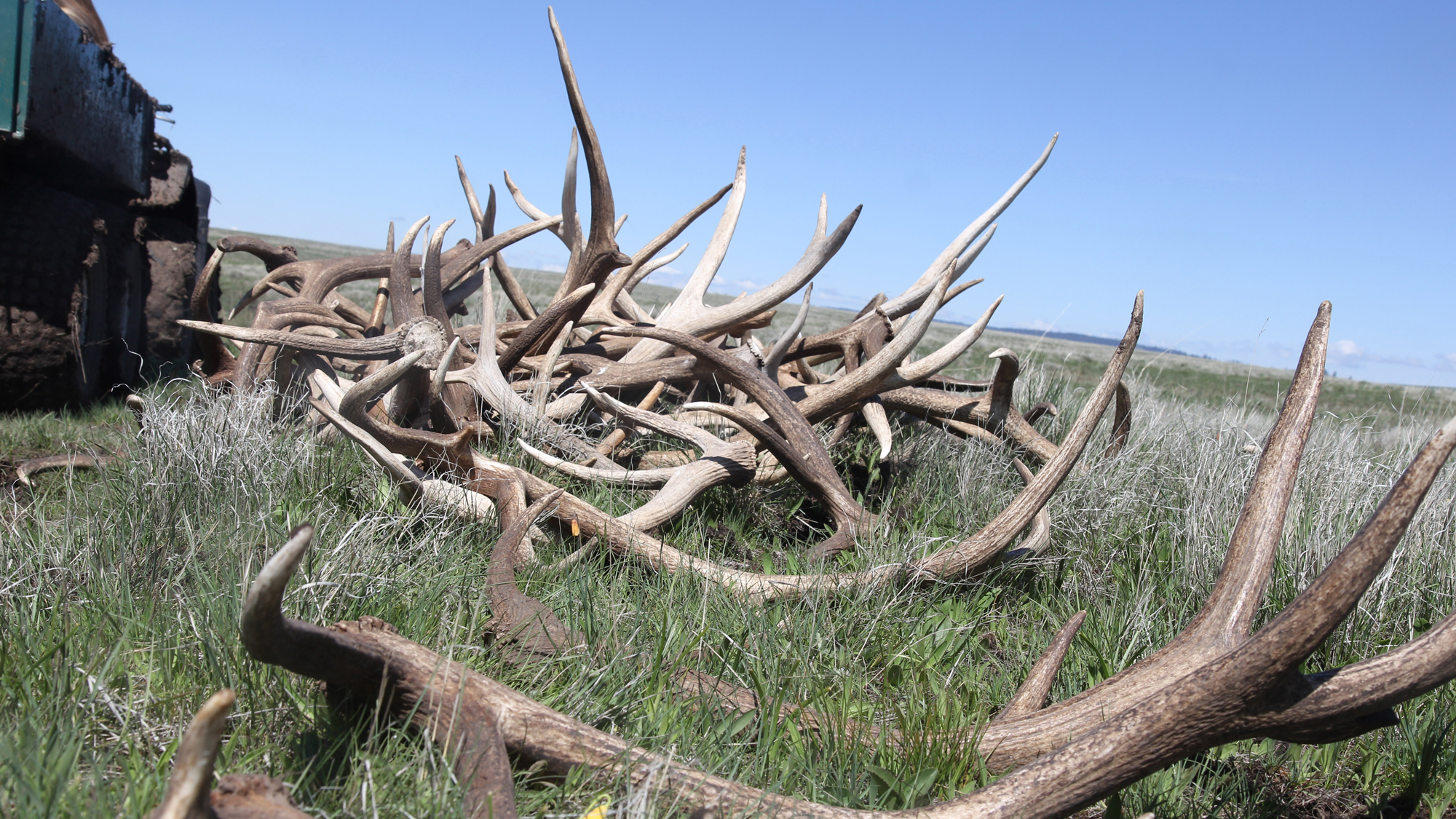
As if reading my mind, Beachy said, “We should find more today. The area we’re going is where a lot of bull elk hang out.”
A Parade of Antlers
Today’s event is geared toward youth, and about 25 kids and their parents have shown up to search. After a brief orientation from Jones, families spread out to cover the prairie. Some have a game plan, scanning hillsides with binoculars and covering the bare ridges where bulls hang out. Others just trot out across the landscape, hoping to stumble across a big one.
Within minutes, a quick scan across the vista reveals nearly every group holding at least one antler. Jones and Beachy use ATV’s to assist with picking up the bounty; a couple large antlers make for a heavy load.
This is local farmer Doug Beck’s third shed hunt of the season. A few weeks earlier, he had spotted a bachelor herd of 76 bull elk near today’s hunting spot. “This is absolutely the best spot to find antlers. Everyone should find at least one today,” he says. “I’m a farmer so I often don’t have as much time as I’d like to help out the community. This is a way to get outside and benefit a good cause.”
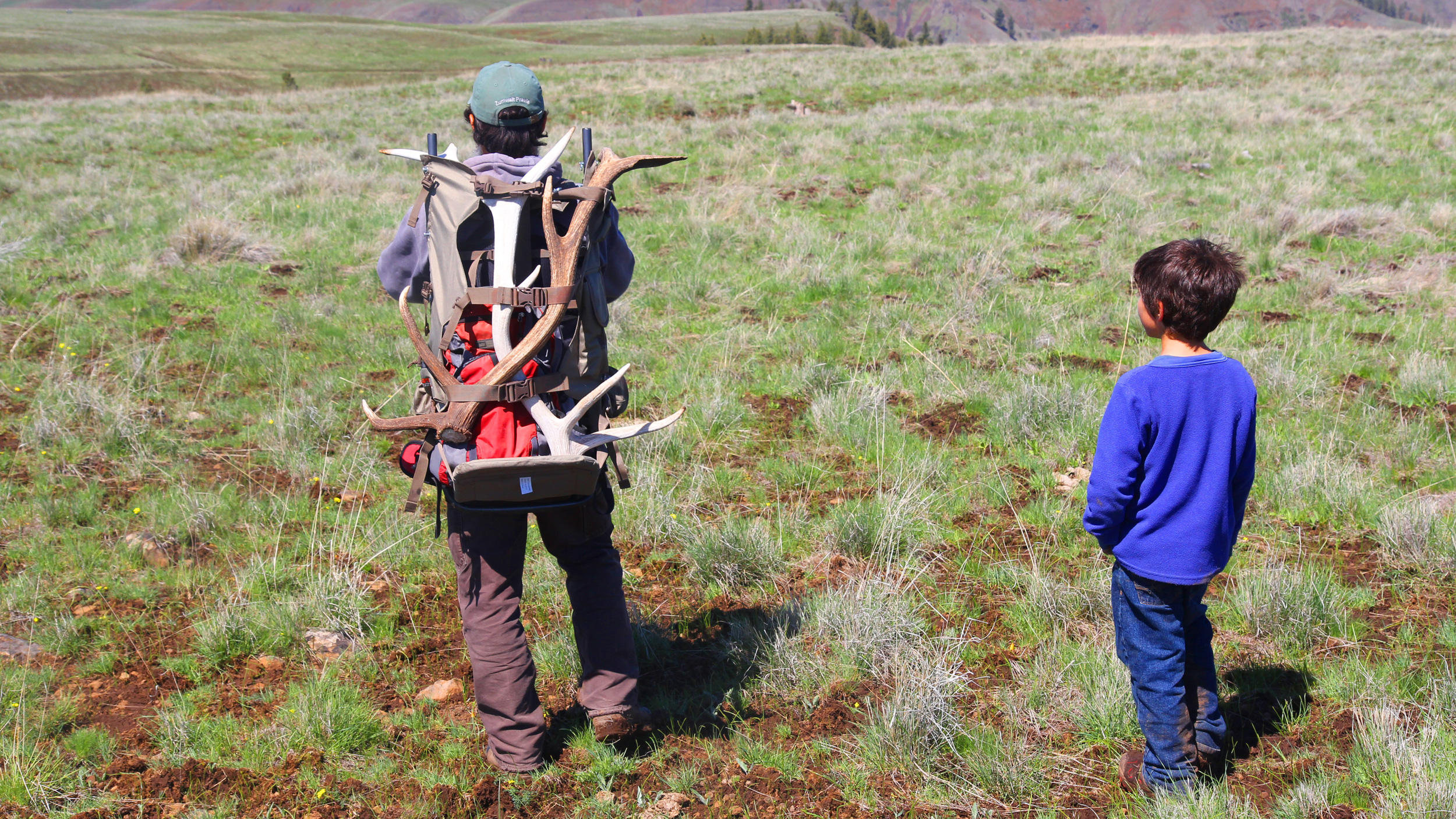
All around, it seems, shed hunters both young and old are reveling in the bounty. In one grassy canyon I come across Terri Hook and her family, loaded down with antlers. They’re experienced searchers and already carry an impressive haul.
“I’m here for the kids. We are outside all year long, camping, hunting, searching for morel mushrooms,” she says. “The kids just love this day. They have an absolute blast. It’s like a treasure hunt.”
As I’m watching other shed hunters, my own family has slipped out of sight. I start hiking the rolling hills to catch up, and soon find them. My wife Jen calls out that she hasn’t found one yet. Her love is native plants, and so far she has photographed 8 different species of wildflowers.
But soon she is in the hunt, excitedly pointing. There’s an antler on the ground, and quickly another. I find my own, a small, twisted antler. And then Jen finds a beautiful, heavy six-point antler.
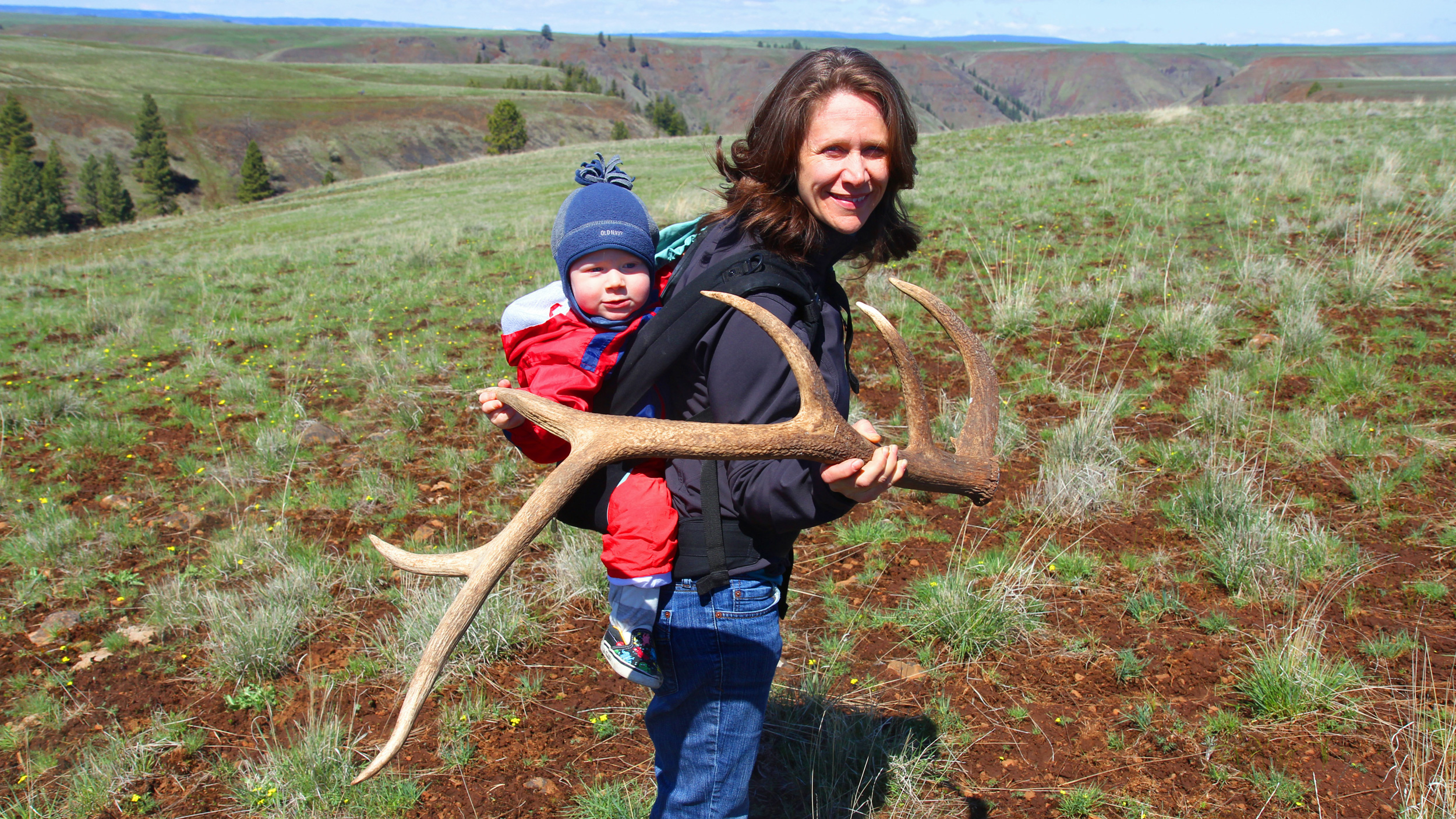
“That one will bring more than $100,” says Beachy, who strolls up with a backpack to haul out the find.
My son Derek, riding in a backpack, reaches out to touch the antler. He is in his glory, surrounded by running kids and calling meadowlarks.
Soon, Derek has had enough and so Jen catches a ride back to the rendezvous site. I hike back too, picking up another antler along the way. As families converge back to our gathering site, it seems everyone has an antler. They’re piling up.
Jones spreads them out and asks for guesses. Kids are shouting out: 50, 55, 70. One brave boy says, “I think there’s 90,” and other kids laugh.
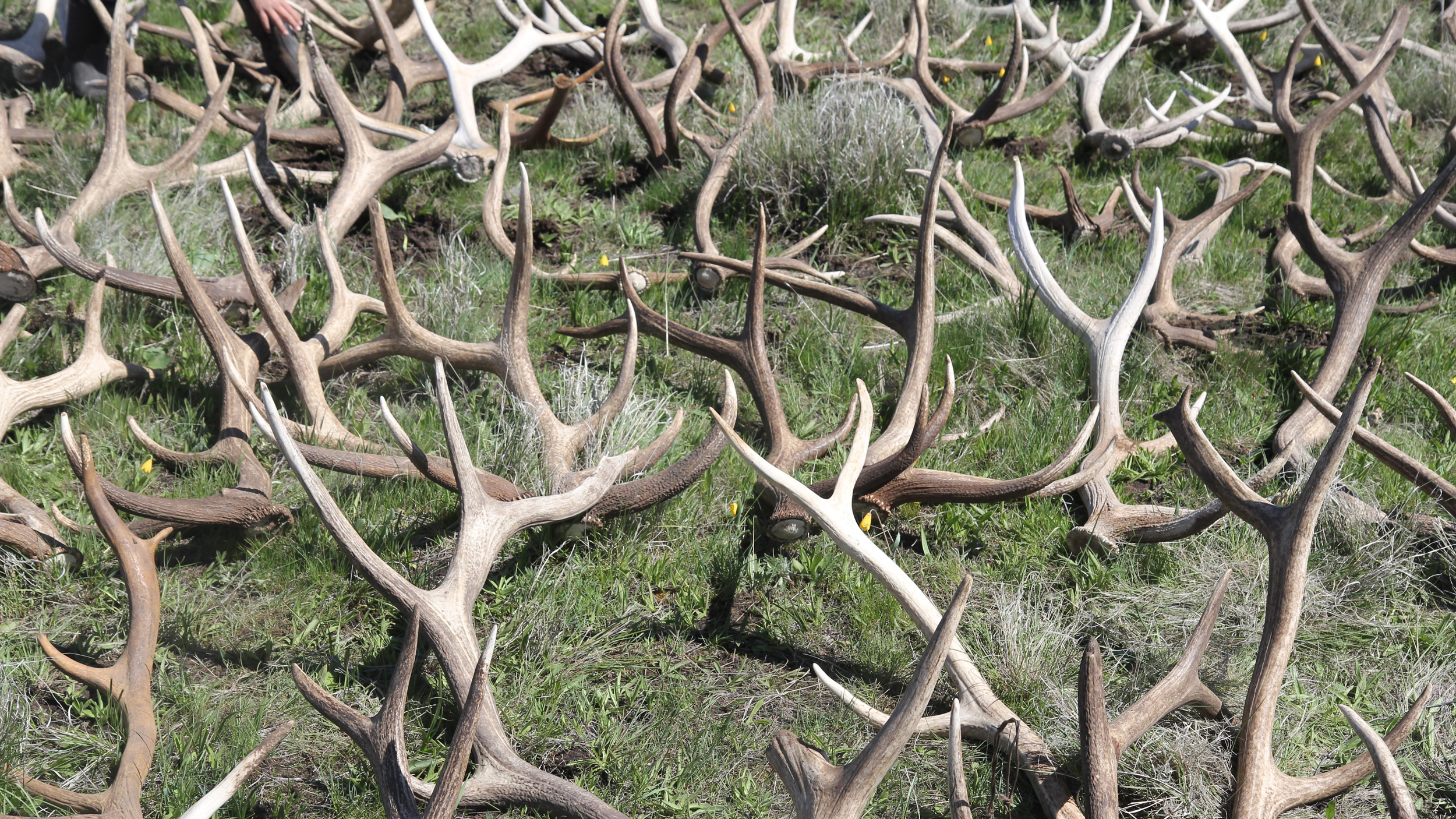
It turns out he’s low. The final count is 167 antlers, setting a new record for Zumwalt shed hunts. Yes, these finds represent an elk over-abundance.
But they’re also a powerful tool. I survey the scene around me: hunters eye particularly big specimens, counting points. Small children hoist antlers over their heads. Farmers share stories with conservation managers.
The love of antlers and elk and elk hunting – loves I share – connect us all to this beautiful prairie on a gorgeous spring day. It is a celebration of families in nature and of outdoor life – among the many benefits provided by conservation.
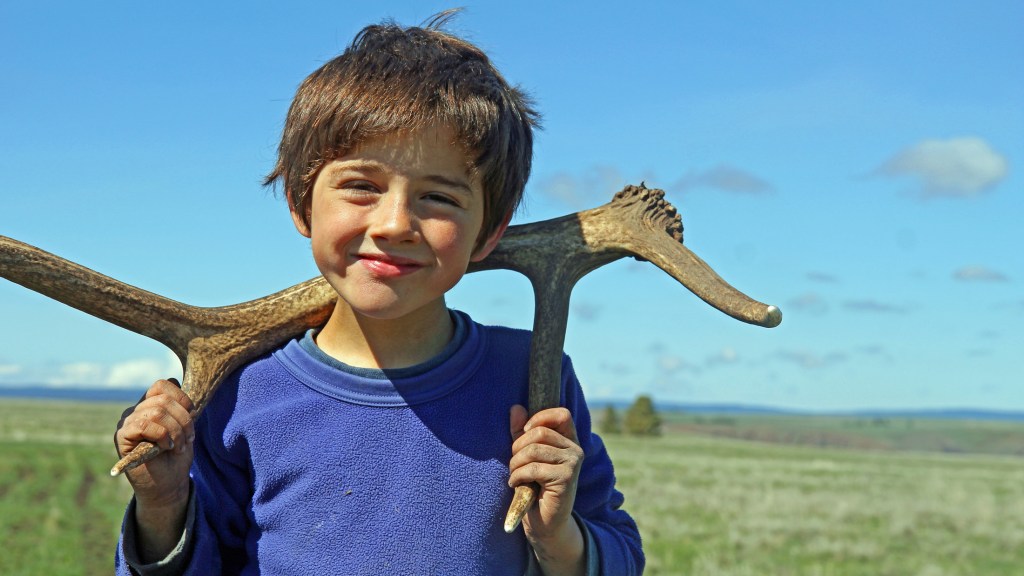



Incredible story there. What happened after? Take care!
339775
I wonder – what are the elk’s natural predators – wolves? and are they existent in the area? I imagine they wolves are not existent in the area and need to be for population balance to be maintained in all species. Also, the antlers are a food source for other species and should be left alone.
Since the antlers are taken away, do you think the annual event is depleting rather than recycling the calcium? Or is the soil very calcium rich?
Two thoughts came to my mind while reading this article. My first thought was in line with the previously posted comments, that I hope the antler hunters are leaving enough for the local wildlife to feed on. Shed antlers are an important source of calcium for rodents and other critters. That’s why you don’t typically find antlers lying around for years and years, and older antlers will exhibit teeth marks.
My second thought, when I got to the discussion on elk overpopulation, is that the area needs more wolves! The preferred prey of wolf packs is elk. The area probably has enough mountain lions, since their preferred prey, deer, are not over abundant. Unfortunately, most ranchers and many local residents don’t like the idea of predators and have been opposing the widespread establishment of wolf packs. It has taken years of protection for mountain lions to gain relative acceptance. I suspect it will take many more before wolves are accorded the same acceptance.
I wonder how much the ground squirrel population and then thus the hawks, owls and golden eagles will suffer from the lack of nutrients and proteins taken from the field in the form of antlers for money. Yes, a great cause, and it sounds (reads) like one buyer has it sewed up vs. a fair opportunity for all at an sales event like an Auction Open to the Public. Once again, a Natural Resource (Antlers) from a “Public” Game animal, an animal that roams all of Oregon and should belong to all Oregonians, but the by-products farmed by locals and sold to one and only one buyer. Used to be a day it was illegal to sell any game products to anyone for any reason etc. But, somehow–in the name of benefiting a community and a good cause–which 4-H and FFA is, Joe the Plumber is cut out of the loop, Joe the Taxpayer doesn’t even have a chance to bid or buy the antlers. It kind of smells like the Guides who work deals with logging companies to get gates locked, even on BLM roads, yet ODF&W personnel get the guided hunts on free invitations???
Did you count any other wildlife worthy of note? You could kill two birds with one stone. E.g. Sage grouse? Pronghorns? Mule deer vs. white tail populations, black bears, wolves, etc. Spruce grouse is what concerns me. I used to see many of them in NE Oregon, and lately, none! But, more and more turkeys.., as in possibly TOO MANY turkeys? Seems like ODF&W only cares about possible revenue, not preserving natural/native resources. That’s why our river systems are full of illegally introduced small mouth bass and ODF&W has size length limits and quotas on them, an invasive species with “regulations.” Why? The influence of “Professional” Guides. Guides can make money off of invasive species like small mouth and walleyes. And they can influence Controlled Hunts and tag quotas and work deals with private logging companies to offer up guided hunts for logging companies clients by getting locked gates put on what used to be BLM land and roads through “Land Swaps” that block thousands of acres of Public Access because some private person or logging company now has a 20 ft. right of way, etc. It’s been going on in Lane County for years, and now they are using that strategy in Douglas County. ODF&W wonder why tag & license sales are down, and it’s simple, there is no more public access, not even to BLM Lands!?!?
I always wondered about antlers sold in pet stores. Had I known that shed antlers were sold to raise money for non profits, I would have purchased for my rescued dogs. The labeling of these products is crucial for someone like me who does notcondone trophy hunting.
Nature never ceases to bless us. We just need to find the right way to utilize her gifts.
Sounds like fun! We live in rural east GA and deer are seen almost daily. Our puppy dog loves chewing on a piece of antler. My husband uses a power saw it cut an antler into pieces. Great article. Thanks.
This is – I think – a great idea to collect the antlers. Perhaps they can take the place of the killing / poaching of the Rhinos and Elephants for their horns / Tusks. These come off “naturally” and the animals don’t HAVE to die. This is such a beautiful thing that happens in Nature. Isn’t Jehovah great in allowing US to enjoy these things!
I’d be interested in helping the cause by purchasing an antler or two – my dog doesn’t like them but my mantle would be improved by an antler! Where can I find these for sale?
Y’all would make a LOT of money selling these online. That’s the reason I even clicked on this article to read- in hopes of finding a link to buy some. I’m in Washington DC, so I don’t get the opportunity to hunt for many sheds out here. Is there a link anywhere???
Interesting article thank you Love nature
As a Volunteer Naturalist in the Rocky Mountain region, I have been instructed to leave those antlers so other “critters” can chew on them for different valuable reasons – survival with better health, either with sharper teeth, or for food content. Any thoughts?
Thank you
Certainly many rodents and other critters gnaw on antlers. In this case, there is a very large concentration of elk, and the shed hunters don’t find every antler. In fact, we found a number of antlers from last year.
I find it unlikely that shed hunters remove enough antlers to influence small mammal nutrition or populations. I would be interested if anyone has done scientific studies on this topic.
While not applicable here, is it possible that antler collection removes a critical source of calcium (very limited in plants) for gnawing rodents that are the base of carnivore food webs? Could collecting antlers in low antler density areas could negatively affect owls, foxes, weasels etc?
Hi Darcey,
It is a good question. We found antlers on Zumwalt that were a year old — so they had been on the prairie for a long time without being eaten by rodents or other mammals. I think even with the extensive shed search, many are missed. In areas with fewer antlered animals, I do not know. However, antlers are MUCH more difficult to find in a forested environment, so I suspect that most are not removed. I welcome anyone to post who has literature on this topic.